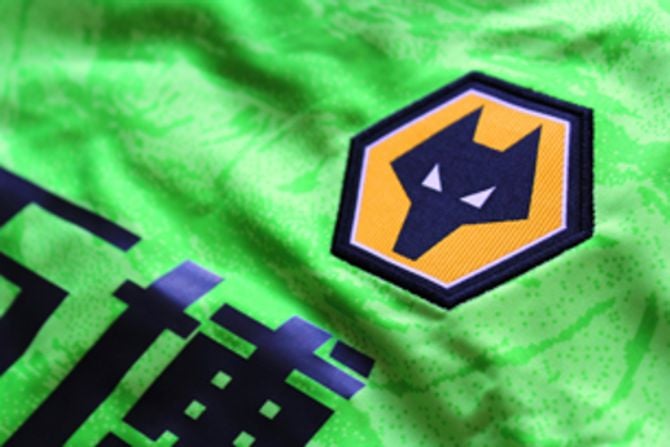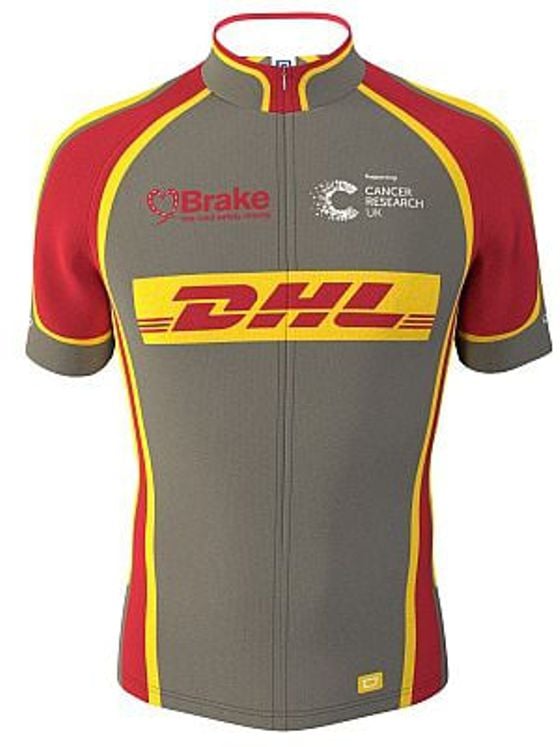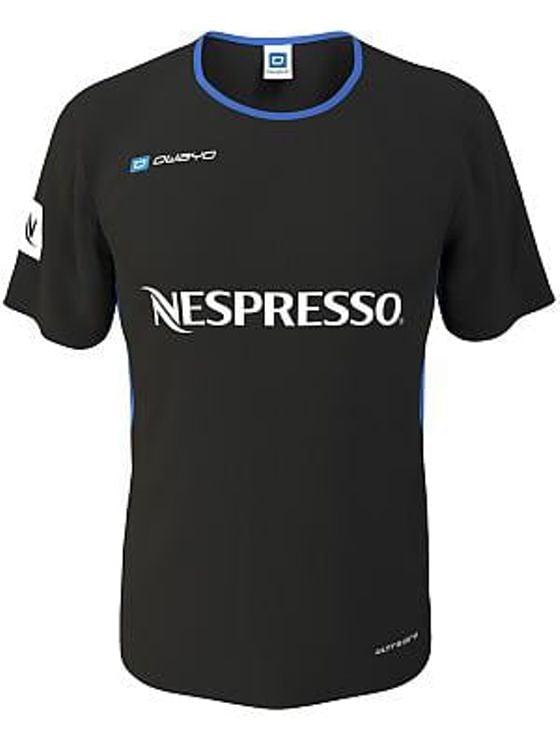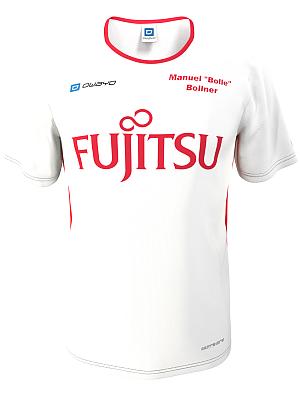How Superhero Culture Inspires Sports Jersey Design:
Elevating Your Corporate Identity

From Superman’s cape to the iconic Oranje of the Dutch national team, uniforms have always been more than clothing. Beyond their practical use, they carry meaning and identity, uniting fan communities and even entire nations.
We often think of sports jerseys and superhero costumes as complete opposites, yet they share more in common than first meets the eye.
Superhero culture can inspire sports jersey design, bringing the appeal of icons like Batman and Wolverine into the kits that athletes wear on the field.
The Psychology Behind the Superhero Cape
Superheroes speak in the language of symbols, their costumes encoding the very essence of who they are; without them, the characters would feel incomplete. Superman’s bold ‘S’ crest embodies hope, Batman’s bat silhouette projects fear, and Spider-Man’s web pattern captures his dual life between the ordinary and the extraordinary.
When someone puts on a superhero costume, they feel powerful — a phenomenon psychologists call ‘enclothed cognition’: wearing the uniform means becoming the uniform. We mentioned Superman, as Clark Kent, his choice of cheap office wear, the goofy glasses, is befitting that weak demeanor. But in the Superman suit, he’s suddenly, well, super.
The psychology of the uniform works in distinct ways. It allows the late (and great) Christopher Reeve (still the Superman) to embody the character he portrays, convincing audiences he’s both the Man of Steel and his very much human counterpart.
The uniform works through a masking effect, with identity markers creating a psychological separation between the everyday self and the superhero persona. With a uniform on, the individual feels empowered, putting on the ‘mask’ that allows them to feel like more than they are.
It also works for those on the other side, the power coming through association. When you see Bruce Wayne with his expensive garb, you buy the billionaire playboy persona. With the batsuit, he is intimidating and seemingly invincible, a superhero, even without actual superpowers.
Infusing Championship Teams with Comic Book Energy
Sports teams can use these exact concepts to create a customized visual identity that matches the strength of the community, the personality of the brand.
Several MLB teams have taken a transparent and direct approach by hosting official Marvel Super Hero™ Nights. Teams like the New York Mets and Pittsburgh Pirates have offered fans themed gear, from Spider-Man-inspired jerseys to Captain America-style T-shirts. While strict league rules prevent players from wearing these designs in games, the Pirates once fully embraced the theme by donning a variety of superhero costumes on a team road trip.
The NBA’s now-defunct G-League and many college basketball teams have also used Marvel to supercharge their jerseys, and the Golden State Warriors have released posters featuring contemporary players with exaggerated superhero physiques and costumes.
With many examples across sports, it’s clear this trend is far from niche. The New Jersey Devils have offered Super Hero nights to fans, with players wearing warm-up kits inspired by characters like Iron Man and the Hulk. And outside of the United States, rugby’s Crusaders in New Zealand have also featured Marvel-inspired designs in their outfits.
For some, it may look like a cheap gimmick, but franchises choose superhero promotions for a reason. Partnerships don’t just boost sales and visibility; with Marvel, they also add layers of power, confidence, and storytelling to the game. For athletes and fans alike, the uniform becomes a source of identity and inspiration — more than apparel, it’s a symbol.
The design, however, doesn’t need to feature a specific intellectual property or superhero to work. It doesn’t need to be a Marvel adaptation for fans to be on board. The point is giving both players and fans a jersey that is infused with the character of the club, the city, the community.
When they put on that jersey, they’re a part of something larger, something stronger. The power comes from the collective, from the force you feel from being one of many, representing a bigger group, with the backing of history behind you.
For a corporate brand, the same premise applies. You can give your company’s identity some oomph by infusing superhero design components. Instead of a drab and boring uniform, give your employees something they can be proud of, a garment that unites, shows that they’re part of a collective.



When the athlete or employee puts on that uniform, they should feel like they’re putting on armor, a layer of strength, something that makes them feel better, not worse.
Plus, when everyone has a uniform, there’s a togetherness. There’s also equality, because no matter the players’ background or economic status, they become part of an equal group, a collective that’s working together towards common goals. Even something small, a custom signifier that shows a single team, that’s enough to foster that team spirit.
Athletes as Superheroes in Pop Culture
Sports stars and superheroes, we sometimes think they’re the same. Athletes know how powerful the mythology of superheroes can be, and often adopt the personas of existing characters to go larger than life.
For Superman, there are at least two notable examples. The first is Dwight Howard, the Orlando Magic legend and recent NBA Hall of Fame inductee. But undoubtedly the most famous basketball Superman is Shaquille O’Neal, who even developed a well-documented beef with Dwight over the “S” moniker.
And who can forget Usain Bolt, the fastest man alive? He was often likened to The Flash, the superfast superhero, to the point that the Jamaican even pushed for a cameo in the Hollywood adaptation (shame it never happened!). His famous “Lightning Bolt” celebration would certainly have been a good fit for the movie.

There are also examples in soccer, with Newcastle’s Jonas Gutierrez donning a Spider-Man mask after scoring a goal. Pierre-Emerick Aubameyang, the famed striker for Arsenal and Borussia Dortmund, would often don a Spider-Man or Black Panther mask to celebrate scoring a goal.
The takeaway: athletes adopting superhero personas works, and fans love it. We admire sports stars for their physical prowess, for their ability to do things that the average person just can’t do. That’s part of what a superhero is, right?
When Design Goes Wrong
Of course, adopting a superhero design isn’t a surefire guarantee of success. Not all costumes or jerseys succeed, nor does the superhero theme always work, and there are some painful examples of this fact.
There’s the big one covered by the tabloids: Met Gala’s 2008 “Superheroes: Fashion and Fantasy”. Lynda Carter, of Wonder Woman fame, made a bit of an effort, wearing cuffs that matched her former television character.
But the rest of the stars didn’t read the memo, or they just decided to ignore it. Where effort was made, it was muted, or noticeable only to the very keen eye. The gown and tux combos were standard; they could have been from 2008 or 2018, the theme didn’t seem important.
And in sport, there are some clangers, too. There’s the infamous 1999 “Turn Ahead the Clock” jerseys from the Tampa Bay Devil Rays, for example. They had a Marvel-esque look, futuristic, and featured neon logos and a sleeveless design. It wasn’t officially a superhero design, but it certainly was inspired by a comic book aesthetic, and the result was a complete flop.
The team quickly did a rewind on the theme and pretty much erased it from history. If your efforts to design a superhero uniform go wrong, don’t be afraid to own it. There are always lessons to be learned; you can approach mistakes with humor, and there will always be another opportunity to release a new version of your design.
Lessons for Corporate Identity
The way superhero themes and sports can work together, the same ideas can also be applied by companies looking to improve their corporate identity, enhancing the feeling of community both within the organization, and with consumers and potential leads.
The emphasis on teamwork and community is already clear. But the superhero template is also about more subtle elements that can be used to supercharge a corporate identity.
There’s the idea of consistency. That’s why team colors should never change, unless it’s a special event or something drastic is necessary. Apple has kept its minimalist, uniform style for years for its ‘Geniuses’, while Microsoft has taken a more colorful, playful approach. Both strategies build strong brand cohesion, but they set very different emotional tones.



Shared uniforms or branded swag give team members that internal pride companies look for, the idea that you’re happy to wear company stuff outside of work. It can be something as simple as a branded t-shirt or polo, whether it’s to wear at a conference, trade show, hackathon, or to show off daily at the office.
Your logo should work like Superman’s “S”, a strong symbol of your company that exudes your values. Nike’s swoosh, the FedEx arrow, they’re undeniably part of the identity of these companies. What’s yours?

Just as superheroes rely on their suits and costumes to project strength and purpose, teams and companies also use jerseys to build an identity and to foster unity. The uniforms are practical, yes, but they also go beyond function. With the right custom design, you can go beyond the fabric.
Image credits: Title image: Pixabay; Image 2: Owayo; Image 3: Owayo; Image 4: Owayo; Image 5: IMAGO / Sportimage; Image 6: Owayo; Image 7: Owayo; Image 8: Owayo; Image 9: